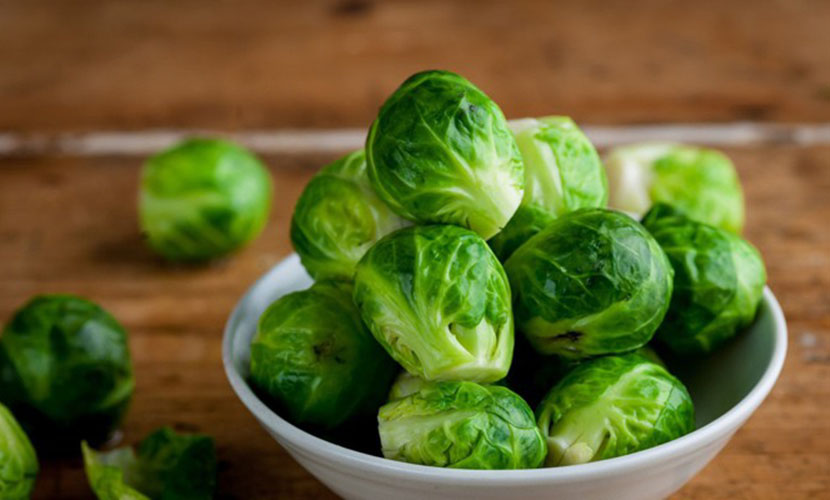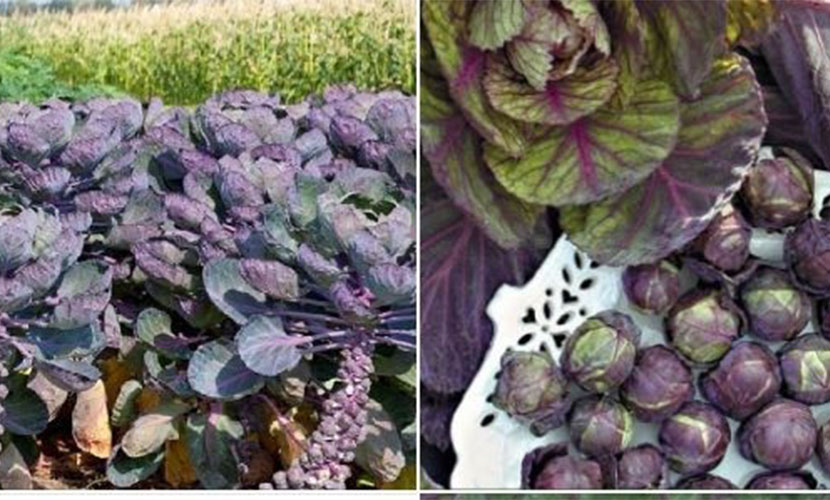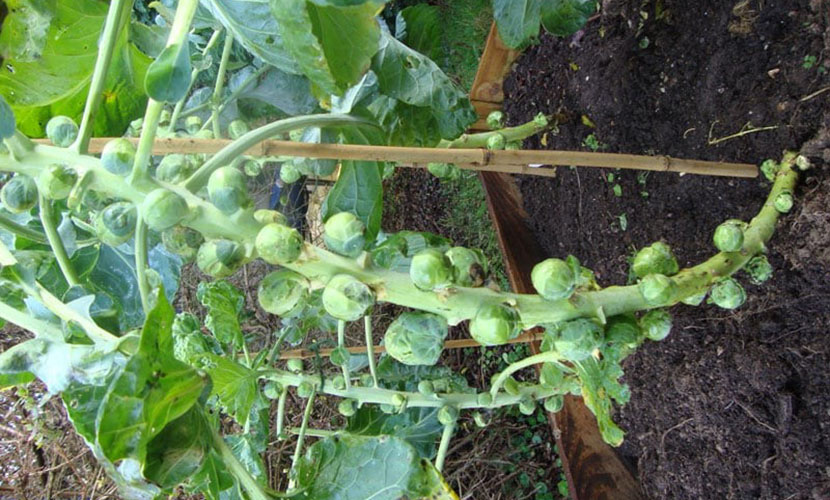
Vietnamese small cabbage has another name as brussels sprout. In recent years, brussels sprouts have become increasingly common in high-end supermarkets and Western-style restaurants in Vietnam. The selling prices have ranged from 180,000 to 300,000 VND per kilogram, depending on the season and supply.
Brussels sprouts are a vegetable variety that resemble regular cabbage in shape but are only about the size of a ping pong ball. They have a mildly sweet, slightly bitter flavor, are crisp in texture, and are rich in nutrients. Recently, they have been appearing more frequently in premium supermarkets and Western cuisine restaurants across Vietnam.
Small cabbages originated in Belgium, where they were first cultivated and widely propagated in the 16th century. In English, they have their name after the capital city, Brussels. The plant belongs to the Brassicaceae (cabbage) family, grows to about 60–120 cm in height. In addition, it has dark green leaves, and produces dozens of small heads along the stem—each weighing only 10–30 grams.
Not only unique in appearance, Brussels sprouts are also famous for their high levels of vitamin C, vitamin K, fiber, and antioxidants. These nutrients support heart health, improve skin, help prevent cancer, and boost the immune system.

Vietnamese small cabbage
Brussels sprouts thrive in cool climates with ideal temperatures ranging from 15–22°C. Stable weather is required for at least 90–120 days. The plant prefers loose, well-drained, humus-rich soil with a pH between 6.0 and 6.8. It also needs 6–8 hours of direct sunlight daily to grow evenly and produce well-formed sprouts.
Seeds should first be germinated in moist seedling trays. After 7–10 days, once they sprout, the seedlings can be transplanted into garden beds, spaced 50 cm apart. After transplanting, it is important to water regularly to maintain moisture, apply organic fertilizer periodically, and remove old leaves to allow the sprouts to develop well.
It takes about 3–4 months from planting to harvest. Each plant produces 30–50 small sprouts. Though the yield is not high, the quality is superior to regular cabbage varieties.

Violet small cabbage from Vietnam
Due to the need for a cool climate, Vietnamese small cabbage is only available in a few highland and temperate areas:
Da Lat (Lam Dong): The largest growing area in Vietnam, supplying most domestic supermarket chains.
Sa Pa (Lao Cai), Moc Chau (Son La): Grown seasonally, mainly in winter and early spring.
Hoa Binh, Yen Bai: Some cooperatives and organic farms are experimenting with cultivation and have reported positive results.
Some greenhouses in Binh Duong and Dong Nai: Use climate control technology to grow year-round on a small scale.

Small cabbage tree
Vietnamese small cababge is not only attractive in appearance but also very nutritious. With high levels of vitamin C, K, antioxidants, and essential minerals, it is as part of a healthy diet.
They are especially ideal for baby food due to their soft texture, mild flavor, and low fiber content compared to other cruciferous vegetables.
The high price of Brussels sprouts is due to several factors:
Imported seeds that are difficult to propagate widely in Vietnam
Long growing period and high production costs and low yield per plant
Strict climate requirements, with few suitable growing areas
Primarily serves high-end markets: restaurants, hotels, and clean eating menus
However, these same factors make brussels sprouts a unique and high-potential agricultural product, especially for clean farming, agro-tourism, or premium urban farming models.
With proper investment in seeds, cultivation techniques, and the expansion of cool climate zones (even using greenhouses), Vietnamese small cabbage could become a key vegetable crop in the premium agricultural sector.
This kind of Vietnam’s fresh cabbage has its high nutritional value, long shelf life, and appealing appearanceis. Therefore, it is not only suitable for domestic consumption but also has huge export potential.
Vietnamese source: https://tapchivietnamhuongsac.vn/bap-cai-ti-hon-giong-rau-ngoai-dat-do-luon-ban-chay-tai-sieu-thi-viet-2497.html
